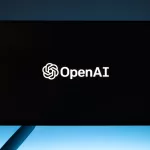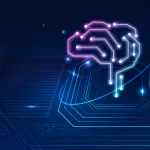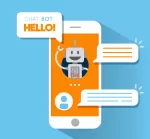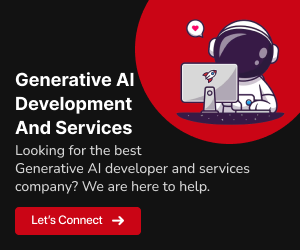The advent of Generative Artificial Intelligence (Generative AI) is ushering in a new era in the American workforce. This cutting-edge technology, characterized by machines capable of creating content, images, and even entire narratives, is poised to transform various industries and reshape the nature of work in the United States. In this blog, we will delve into the implications of Generative AI on the future of work in America, examining both its potential benefits and challenges.
Understanding Generative AI
Generative AI is a subfield of artificial intelligence that focuses on creating data or content rather than just processing it. At its core, Generative AI relies on deep learning models, such as Generative Adversarial Networks (GANs) and Transformers, to generate new content based on patterns and data it has learned from. This technology is versatile and has applications in a wide range of fields, from creative arts to healthcare and beyond.
Benefits of Generative AI in the Workplace

Generative Artificial Intelligence (Generative AI) is revolutionizing the way we work in America. This groundbreaking technology, driven by deep learning models like Generative Adversarial Networks (GANs) and Transformers, has transcended mere data processing to create content, images, and narratives autonomously.
Increased Productivity:
Generative AI offers a remarkable opportunity to revolutionize productivity in various industries. By automating repetitive and time-consuming tasks, businesses can streamline their operations and enable employees to allocate their time and expertise more efficiently. For instance, in the manufacturing sector, robots powered by Generative AI can handle repetitive assembly tasks with precision, freeing up human workers to oversee quality control or engage in more complex problem-solving. This synergy between machines and humans can lead to substantial productivity gains and a more dynamic workforce.
Content Creation:
Generative AI’s prowess in content creation extends well beyond mere efficiency. Content creators, whether they are writers, designers, or video producers, can harness the power of AI to inspire innovation and elevate their creative output. For writers and journalists, AI can generate drafts and even suggest data-driven insights, enabling them to focus on crafting compelling narratives. In the realm of design and visual arts, AI tools can aid in the creation of stunning graphics, artwork, and videos, accelerating the production process while preserving the human touch that brings authenticity and emotion to creative works.
Personalization:
One of the most exciting prospects of Generative AI is its ability to drive personalized experiences for consumers. In the world of e-commerce, for instance, AI-powered recommendation systems analyze user behavior, preferences, and purchase history to offer tailored product suggestions. This not only enhances user engagement but also significantly increases the chances of conversions and repeat business. Beyond retail, personalization extends to industries like healthcare, where AI can help healthcare providers offer personalized treatment plans based on patient data, ultimately improving healthcare outcomes.
Cost Savings:
Generative AI holds the potential to be a game-changer in cost management. By automating tasks and processes, businesses can reduce their reliance on human labor for routine operations. This translates into cost savings through decreased labor expenses, reduced errors, and increased operational efficiency. In sectors like customer support, chatbots powered by Generative AI can provide 24/7 assistance, reducing the need for large customer service teams. Similarly, in finance and accounting, AI-driven automation can handle data entry and processing tasks, significantly reducing the time and resources required for financial management.
Scientific Research:
In the realm of scientific research, Generative AI presents an exciting frontier. In fields like drug discovery and materials science, AI can be an invaluable assistant to researchers. AI algorithms can analyze vast datasets and simulate experiments, helping scientists generate hypotheses and identify promising avenues for further investigation. By accelerating the pace of discovery and innovation, Generative AI has the potential to contribute to groundbreaking advancements in fields critical to human progress and well-being.
Challenges and Concerns
While Generative AI holds great promise, it also raises several concerns that need to be addressed:
Job Displacement:
The automation of repetitive tasks could lead to job displacement in certain industries. Workers in roles that involve routine content creation or data entry may face challenges in the job market. As these roles evolve, there will be a growing need for strategies to transition affected workers into new, more specialized positions.
Ethical Concerns:
Generative AI can create realistic-looking deepfake content, raising ethical concerns about misinformation and privacy violations. There is a need for robust regulations and ethical guidelines to govern the responsible use of AI-generated content, ensuring transparency and accountability in its creation and dissemination.
Skills Gap:
The adoption of Generative AI may require a workforce with new skills. Ensuring that workers are equipped to operate and collaborate with AI systems is crucial. Investing in comprehensive training programs and educational initiatives will be essential to bridge the emerging skills gap and prepare the workforce for the AI-driven future.
Bias and Fairness:
AI systems can inherit biases from their training data, leading to unfair outcomes. Efforts must be made to mitigate bias and ensure fairness in AI-generated content. This includes ongoing auditing of AI models and datasets, as well as the development of algorithms that prioritize fairness and inclusivity.
Security Risks:
Generative AI can also be exploited for malicious purposes, such as creating convincing phishing emails or deepfake videos. Security measures need to be in place to counter these risks. Cybersecurity strategies must evolve to include advanced detection systems capable of identifying AI-generated threats, and organizations must prioritize employee training to recognize and respond to these evolving risks effectively.
Also read : “ChatGPT and Generative AI: A Glimpse into the Future of Work“
The Future of Work in America
The integration of Generative AI into the American workplace will undoubtedly reshape the future of work. Here are some key trends to watch for:
Hybrid Work Environments:
The COVID-19 pandemic accelerated the adoption of remote work, and Generative AI will likely play a role in facilitating remote collaboration. Virtual assistants and AI-driven content creation tools will become essential for remote teams. This shift towards hybrid work models will necessitate a rethinking of workplace dynamics and management practices.
Upskilling and Reskilling:
To remain competitive in the job market, workers will need to acquire skills in AI-related fields, such as data science, machine learning, and AI ethics. Lifelong learning and continuous skill development will be crucial. Employers and educational institutions should collaborate to provide accessible, up-to-date training programs for workers at all career stages.
Creative Collaboration:
Generative AI will become a creative partner rather than a replacement for artists, writers, and designers. Professionals in these fields will collaborate with AI to enhance their creative output. The fusion of human creativity and AI-generated assistance will lead to unprecedented innovations in art, literature, and design.
Regulation and Accountability:
Governments and industries will need to establish clear regulations and standards for Generative AI use. Accountability for the ethical and responsible use of this technology will be paramount. The development of international agreements and industry-specific guidelines will be crucial to ensure a harmonized and ethical AI landscape.
Conclusion
Generative AI represents a paradigm shift in the American workforce, offering opportunities for increased productivity, personalization, and cost savings. However, it also presents challenges related to job displacement, ethics, and security. The future of work in America will depend on how society navigates these challenges, with a focus on upskilling, regulation, and responsible AI adoption. As Generative AI continues to evolve, its impact on the workforce will be both transformative and, if managed wisely, highly beneficial.
Elevate Your Work with GeekyAnts: GeekyAnts, a trailblazer in AI and software development, is leading the charge in reshaping the American workforce with cutting-edge Generative AI solutions. From AI-powered software to innovative content creation tools, GeekyAnts empowers businesses to embrace the future of work with confidence. Discover how their expertise in AI can elevate your productivity, creativity, and security in this transformative era.


























Add Comment